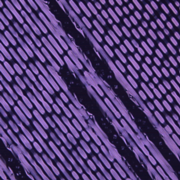Diffraction and fringe field effects in small pixel devices
Liquid crystal displays (LCDs) are currently dominating the flat panel and mobile display market segment because of their excellent performance in power consumption, contrast ratio, viewing angle and refresh rate. The LCD technology has proven itself as relatively low-cost and ultimately scalable with screen diagonals that may exceed 100 inch. Liquid Crystal on Silicon (LCOS) microdisplays are miniature liquid crystal devices on a silicon substrate that operate in a reflective mode in contrast to the conventional transmissive LCDs. LCOS devices with SVGA resolution (800x600) have become available with a pixel size down to 5.4µm. Together with the proprietary Digital Light Processing (DLP) technology of Texas Instruments, LCOS devices are dominating the projector market segment. Furthermore, the technology is well-suited for application in picoprojector technologies and LCOS devices are excellent vehicles for phase modulation in holographic projector systems.
Reducing the pixel dimensions is conceptually a straightforward approach to further increase the resolution of LCOS devices for a given active area to improve the device performance. In addition to many technological challenges, decreasing the pixel size to below 5µm also leads to more fundamental questions on the device behavior. Diffraction effects will start to play an important role Once the structure features approach the light wavelength, so rigorous optical modeling will be required. Furthermore, also boundary effects due to elastic distortion of the liquid crystal between neighboring pixels will become more important. Both effects are investigated in detail from simulations and experiments. More information on the optical simulations can be found here.
Related team members:
Smart electro-optical components for focussing and redirecting light
Aims
The main goal of the project Secondos is to drastically extend the application potential of light steering components based on liquid crystal materials, by demonstrating devices that overcome the main limitations of the current state-of-the-art components. More specifically, we want to tackle several important limitations that currently prevent light steering components based on liquid crystals from being applied in many photonic products.
In this project we will work with two different types of demonstrators. Concept demonstrators are components with a basic optical functionality and for which the research focus is towards a precise specification. For example, a smart optical component that allows to reposition the focus of an incident parallel beam of light with a given switching speed. The working area of these concept demonstrators will be small in order to limit the production cost. Another type of demonstrators are the application demonstrators. These are components with a more complex optical functionality that is often comprised of two basic adaptive functionalities. The aimed specifications are chosen in function of a specific application domain. For example, a smart optical component that redirects the light from an LED in two dimensions. And this with a sufficient steering range and switching speed for application as an eye steering backlight. The working area of these application demonstrators is large and the light manipulation may vary for different positions across the component.
Application domains
Some of the envisaged application domains are:
- light steering for glasses-less multi-viewer 3D displays
- more efficient sun-tracking light collection for photovoltaics or active daylighting
- reconfigurable LED luminaires for more efficient light distribution
Related projects:
Related team members:
VCSEL with liquid crystal overlay

VCSELs (Vertical Cavity Surface Emitting Lasers) emit light perpendicular to the substrate surface. By combining these lasers with a thin layer of liquid crystal material, the aim is to enhance, tune or switch the properties of the laser emission. So far we have demonstrated the possibility of integrating VCSELs into a liquid crystal cell with the following functionalities:
- Switching of the orientation of linear polarized laser light.
- Enhancing the degree of polarization of VCSELs by combining them with a thin layer of chiral liquid crystal.
- Enhanced wavelength tunability (thermally, soon also electrically)
- Switching of the transverse mode profile.


A one-dimensional plane wave expansion model for fully anisotropic materials (based on L. Penninck, Opt. Express 2011) allows us to simulate the behaviour of the VCSELs with liquid crystal overlay.
Publications
- Vertical-cavity surface-emitting laser emitting circularly polarized light, Laser Physics Letters 2013
- VCSEL With Photo-Aligned Liquid Crystal Overlay, IEEE Photonics Technology Letters 2012
Related team members:
Preferentially oriented ferroelectric thin films
Publications
- Preferentially oriented BaTiO3 thin films deposited on silicon with thin intermediate buffer layers, Nanoscale Research Letters 2013
Related team members:

